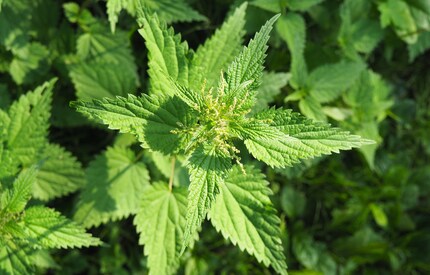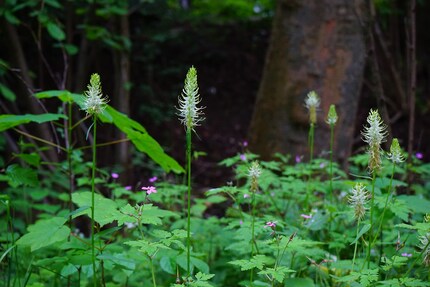
Essbare Wildpflanzen
German, Jürgen Guthmann, Steffen Guido butcher, Roland Spiegelberger, 2015
Our forests are full of tasty plants. Together with a survival expert, I set out to get to know them. In this article, you can find out what I experienced and how you too can go in search of edible wild plants.
There are over 1500 edible wild plants in Switzerland. However, it is quite difficult for a layman like me to recognise them. To find out more about our forests and their plants, I met up with a survival expert and went into the forest with him. Gion Saluz, a full-time survival trainer, knows the Swiss flora and fauna remarkably well. He was able to name a plant every few metres and explain its taste and effect to me.
Gion has acquired this knowledge over many years. But even he was just starting out. Just like me now. He advised me to buy an encyclopaedia of edible wild plants. I should always have it with me on my walks. With such a reference book, you can identify the plants with little effort. In my experience, however, it takes a little practice at the beginning. But after I had used such an encyclopaedia a few times, I found my way around quite well. However, I recommend buying a smaller paperback version for when you're travelling. There are also large, heavy encyclopaedias that contain a lot more information. However, I would recommend these more for home use. They are too clunky and too heavy for a walk.

Essbare Wildpflanzen
German, Jürgen Guthmann, Steffen Guido butcher, Roland Spiegelberger, 2015
The name alone tells you to stay away from it. Stinging nettle! If it comes into contact with your skin, the tiny hairs in your pores break off and release a burning liquid. This liquid causes the unpleasant burning sensation and swelling of your skin.

Nettles grow almost everywhere.
As you can see in the video, however, Gion Saluz persuaded me to eat a stinging nettle raw. I was a little sceptical at first. I imagined the burning pain in my mouth and how my tongue would swell. However, Gion showed me a trick that allowed me to eat this plant without any problems. You have to gently grasp the leaves from the outside and pinch them off. Then roll the leaves into a ball. By squeezing them together, the hairs break off and you defuse their burning effect. I still had a queasy feeling when I put this little ball in my mouth, but I trusted Gion's knowledge.
The nettle tasted really good. It is extremely juicy and has a refreshing effect. It didn't burn. At least not in my mouth. However, the fingers I used to pick the nettle couldn't say the same. It definitely takes a bit of practice to touch the nettle without "burning" yourself. After two to three hours, however, the unpleasant feeling in my fingers disappeared again.
My current favourite plant is the spiky devil's claw. Not only because I really like its name, but also because you can eat everything on it. Whether it's the flowers, the buds, the leaves or the root, everything is edible and also tasty. I particularly like the root. It is slightly spicy. Comparable to a mild horseradish.

The spiky devil's claw
The root of the spiky devil's claw can be eaten raw and cooked. It can also be dried and processed into a tea. Another advantage of this plant is that there is no poisonous plant that looks similar. There is therefore no risk of confusing them and harming your body.
If you are now planning to go in search of edible wild plants yourself, I highly recommend that you buy yourself a small encyclopaedia in paperback format. Or you could book a place on one of Gion Saluz's courses right now. On his website swiss-survival-training.com you will find his course programme and further information.
I get paid to play with toys all day.
From the latest iPhone to the return of 80s fashion. The editorial team will help you make sense of it all.
Show all